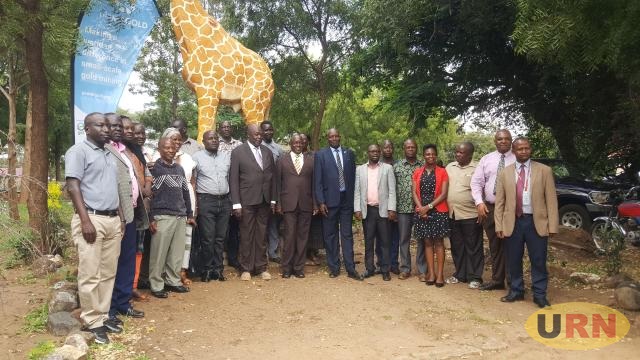
Moroto, Uganda | THE INDEPENDENT | The Ministry of Energy and Mineral Development is set to license artisanal miners in Karamoja to formalize their operations and mitigate environmental impacts. Artisanal and Small Scale Mining (ASM) accounts for up to 90 percent of mineral production but poses significant environmental and livelihood challenges.
The Energy Ministry has partnered with several organizations, including Planet Gold, Impact, and the National Environment Management Authority (NEMA), to gazette mining areas and license the miners. Artisanal miners are encouraged to form groups and apply for Artisan and Small-scale mining licenses at a fee of 1 million shillings.
Agnes Alaba, Commissioner of the Mines Department, urged local government leaders in Karamoja to identify suitable sites for artisanal mining activities. The Ministry is looking to confirm proposed sites with local leaders and designate specific minerals for small-scale mining. The Ministry is also resuming an airborne survey in Karamoja, previously incomplete due to insecurity, to cover the entire region.
Dean Ochama, an Environmental Officer with Planet Gold, highlighted the project’s efforts to eliminate mercury use in gold recovery. Mercury poses high risks to human health and the environment, and the project aims to introduce mercury-free technology plans for mining areas across the country.
Peter Lokeris, Minister for Karamoja Affairs, emphasized the importance of recognizing small miners and providing necessary support through organized associations. These associations can attract government assistance and help miners acquire modern mining equipment. Lokeris also called for speeding up the process of attracting investors, noting that many minerals in Karamoja are shared with Kenya, where most investors are concentrated.
Godfrey Okech, LC5 Vice Chairperson of Abim District, supported the formalization move but expressed frustration with bureaucratic hurdles in acquiring safeguarding certificates from NEMA. He urged the Ministry to cooperate with district leadership to ease the licensing process and allow people to resume mining in newly discovered sites, which are vital for their livelihood.
Ceaser Akol, Moroto District Speaker, advocated for public-private partnerships to foster local economic development. He criticized the imposition of unnecessary fees on miners by institutions like the National Forestry Authority and sub-county officials, calling for transparency in revenue collection.
John Baptist Lokii, MP for Matheniko County, demanded a land audit in gazetted mining areas to ensure community land is not usurped by investors. He stressed the need for the remaining land to be used for agriculture and livestock farming and called for increased awareness about the dangers of mercury use in mining.
In 2021, an Airborne Geophysical survey by the Ministry identified 18 mineral targets nationwide, including uranium, cobalt, copper, nickel, gold, chromite, iron ore, tin, tantalite, tungsten, limestone, marble, graphite, gemstone, and rare earth metals. However, parts of Karamoja were excluded due to insecurity, and efforts are underway to complete this survey.
*****
URN
 The Independent Uganda: You get the Truth we Pay the Price
The Independent Uganda: You get the Truth we Pay the Price



